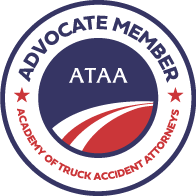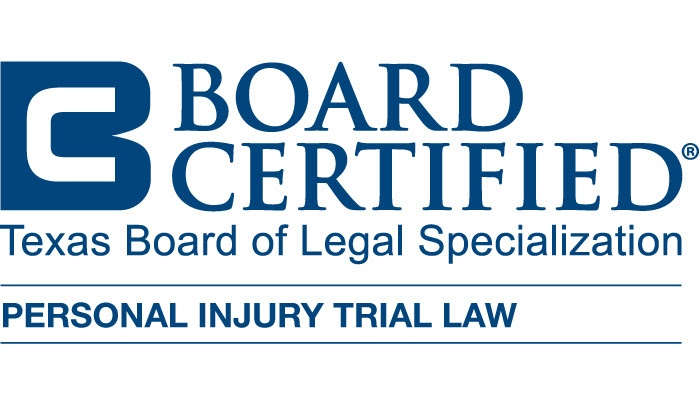Slip and fall accidents are common occurrences that can lead to serious injuries, ranging from minor bruises to severe fractures or head injuries. In Texas, these accidents often happen in places like grocery stores, restaurants, shopping malls, and other public spaces. Property owners have a duty to maintain safe environments for visitors, and when they fail to do so, they may be held liable for any injuries that occur. To successfully pursue a slip and fall lawsuit, it is essential to prove that the property owner’s negligence caused the accident. This process involves understanding the legal framework for negligence claims in Texas and gathering the necessary evidence to support the claim.


The Legal Framework for Proving Negligence
In Texas, negligence claims are based on four key elements: duty, breach, causation, and damages. To establish a property owner’s liability in a slip and fall case, the injured party must demonstrate that the owner owed them a duty of care, that this duty was breached, that the breach caused the injury, and that actual damages resulted from the injury. Each of these elements plays a crucial role in building a strong case.
The first element, duty, refers to the legal obligation property owners have to ensure their premises are safe for visitors. This duty varies depending on the visitor’s status, which can be classified as an invitee, licensee, or trespasser. Invitees, such as customers in a store, are owed the highest duty of care, requiring property owners to regularly inspect and maintain their premises. Licensees, like social guests, are owed a moderate duty of care, which involves warning them of known dangers. Trespassers are owed the least duty, generally only requiring property owners to avoid willful harm.
Once the duty of care is established, the next step is to prove that the property owner breached this duty. A breach occurs when the owner fails to take reasonable steps to prevent hazardous conditions. This might involve not fixing a broken step, neglecting to clean up a spill, or failing to provide adequate warning signs for potential dangers. Demonstrating a breach often requires showing that the hazardous condition existed for a sufficient amount of time for the property owner to have known about it and taken action to remedy it.
My focus is to give a voice to families who have suffered a wrongful death or a serious injury to a family member caused by an 18-Wheeler, commercial truck, or a drunk driver. Contact us today, we can help you.Helping Injury Victims for Over 25 Years
Establishing Causation and Damages
The third element, causation, involves proving that the property owner’s breach of duty directly caused the slip and fall accident. This means showing that the hazardous condition was the primary reason for the fall and that the accident would not have occurred if the property owner had fulfilled their duty of care. Establishing causation can be challenging, as it often requires demonstrating a clear link between the breach and the injury. This may involve gathering witness statements, surveillance footage, and testimony to support the claim.
The injured party must also prove that they suffered actual damages as a result of the slip and fall accident. Damages can include medical expenses, lost wages, pain and suffering, and other related costs. It is important to document all injuries and expenses thoroughly to provide a clear picture of the impact the accident has had on the victim’s life. Medical records, bills, and receipts can serve as crucial evidence in demonstrating the extent of the damages.
Gathering Evidence to Support the Claim
Proving negligence in a Texas slip and fall lawsuit requires a thorough investigation and the collection of compelling evidence. This process often begins immediately after the accident, as the injured party or their representatives gather information that will support their claim. Key pieces of evidence can include photographs of the accident scene, witness statements, and incident reports.
Photographs can be particularly powerful in demonstrating the hazardous condition that caused the slip and fall. These should be taken as soon as possible after the accident, capturing the scene from multiple angles and highlighting any specific dangers, such as wet floors, uneven surfaces, or poorly lit areas. It is also helpful to include photos of any warning signs or lack thereof, as this can further illustrate the property owner’s negligence.
Witness statements can provide valuable insights into how the accident occurred and the conditions that led to it. Bystanders who saw the fall or were familiar with the property’s condition can offer firsthand accounts that support the injured party’s claim. It is important to obtain contact information for any witnesses and ask them to provide written statements detailing what they observed.
Incident reports are another crucial piece of evidence. Many businesses and public places have procedures for documenting accidents that occur on their premises. These reports can include details about the accident, the hazardous condition, and any actions taken by the property owner or staff. Requesting a copy of the incident report and ensuring it accurately reflects the circumstances of the fall is essential.
Medical Documentation and Testimony
Medical documentation is vital in proving the extent of the injuries sustained in a slip and fall accident. This includes medical records, doctor’s notes, treatment plans, and bills. Detailed medical documentation helps establish a clear link between the accident and the injuries, making it difficult for the property owner to dispute the claim. Additionally, keeping track of all related expenses, such as transportation to medical appointments and any necessary home modifications, can further support the claim for damages.
Related Videos
Choosing a Personal Injury Attorney
Types of Compensation in a Truck Accident Claim
Challenges in Proving Negligence
While gathering evidence and building a strong case is essential, there are several challenges that can arise in proving negligence in a slip and fall lawsuit. One common challenge is the defense’s argument of comparative negligence. In Texas, the concept of comparative negligence allows for the possibility that the injured party may bear some responsibility for their accident. If the injured party is found to be partially at fault, their compensation may be reduced in proportion to their degree of fault. For example, if a person is found to be 20% responsible for their fall, their compensation will be reduced by 20%.
Another challenge is the potential for disputes over the existence and duration of the hazardous condition. Property owners may argue that they were unaware of the danger or that it had not existed long enough for them to address it. This is where timely evidence collection, such as photographs and witness statements, becomes crucial. Demonstrating that the hazardous condition had been present for a significant amount of time can help counter these defenses.
The Importance of Legal Representation
Given the complexities involved in proving negligence in a Texas slip and fall lawsuit, having experienced legal representation is invaluable. An attorney who is well-versed in premises liability law can guide the injured party through the legal process, help gather and present evidence, and advocate for fair compensation. Legal representation can also provide peace of mind, allowing the injured party to focus on their recovery while their attorney handles the legal aspects of the case.
An attorney can also negotiate with insurance companies on behalf of the injured party. Insurance adjusters often attempt to minimize payouts or deny claims altogether. An attorney can counter these tactics, ensuring that the injured party receives the compensation they deserve. In cases where a fair settlement cannot be reached, an attorney can take the case to court and present a compelling argument to a judge or jury.
Contact Willumsen Law Firm, P.C. Today
If you or a loved one has been injured in a slip and fall accident in Texas, it is crucial to act quickly to protect your rights and seek compensation for your injuries. Proving negligence in a slip and fall lawsuit requires a thorough understanding of the legal process and the ability to gather and present compelling evidence. At Willumsen Law Firm, P.C., our dedicated team of attorneys has extensive experience handling slip and fall cases and can provide the guidance and representation you need. We understand the challenges you face and are committed to fighting for the justice and compensation you deserve.
Contact us today for a free consultation to discuss your case and explore your legal options. Let us help you navigate the complexities of your slip and fall claim and work towards a favorable outcome.



